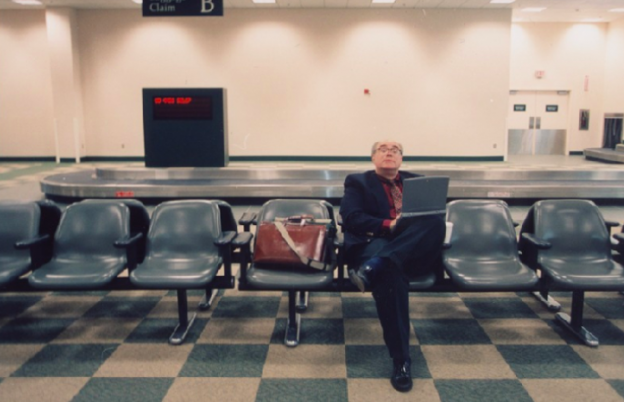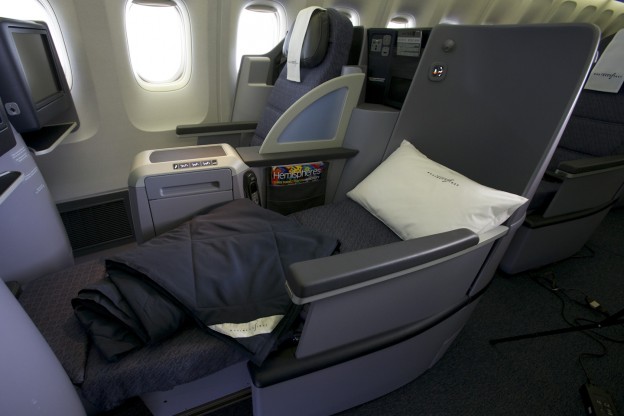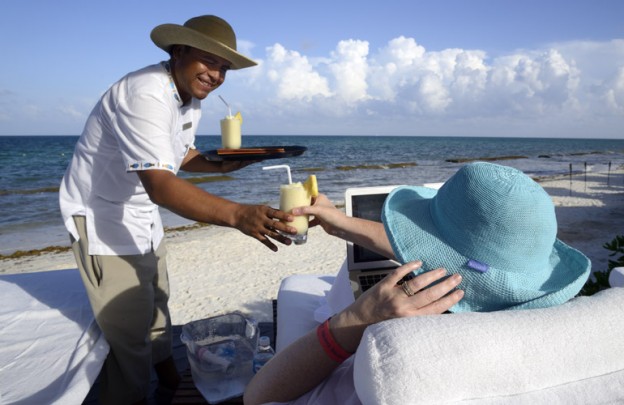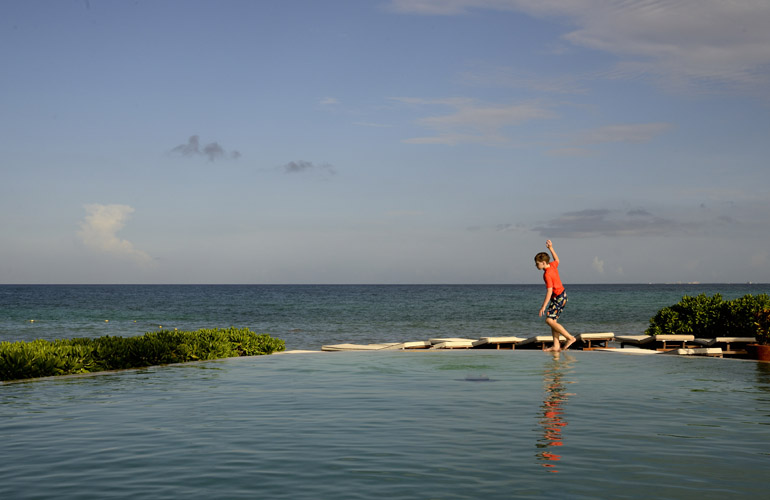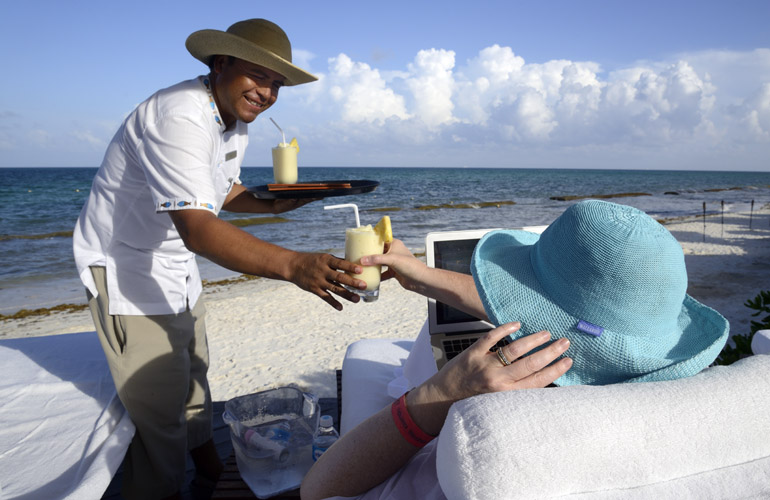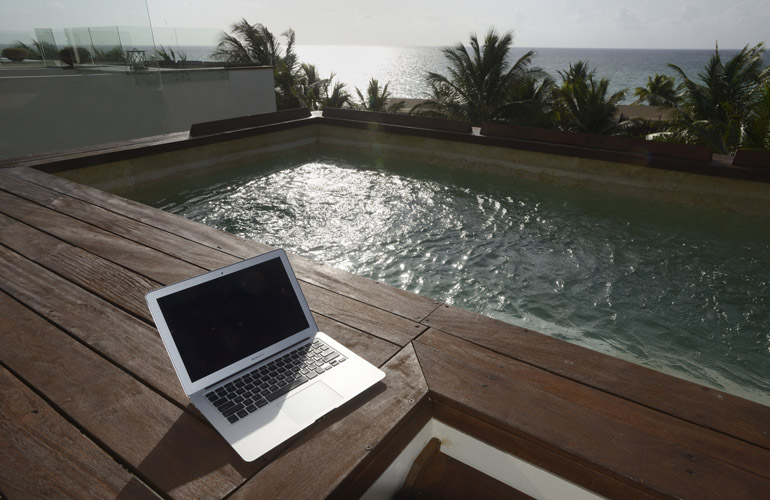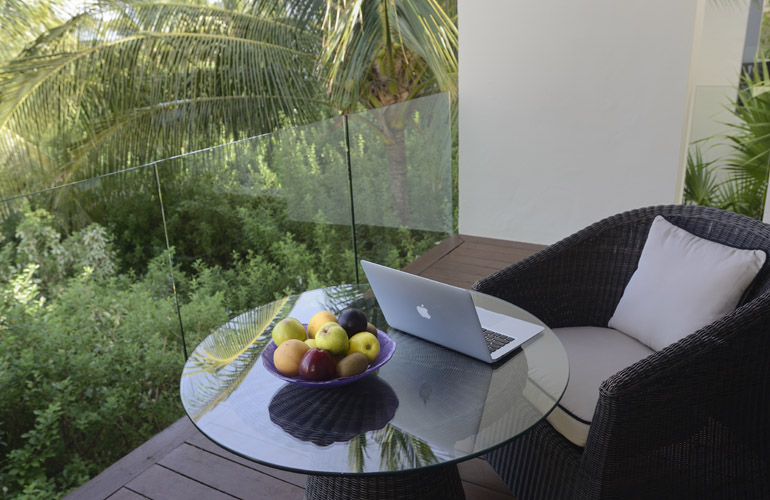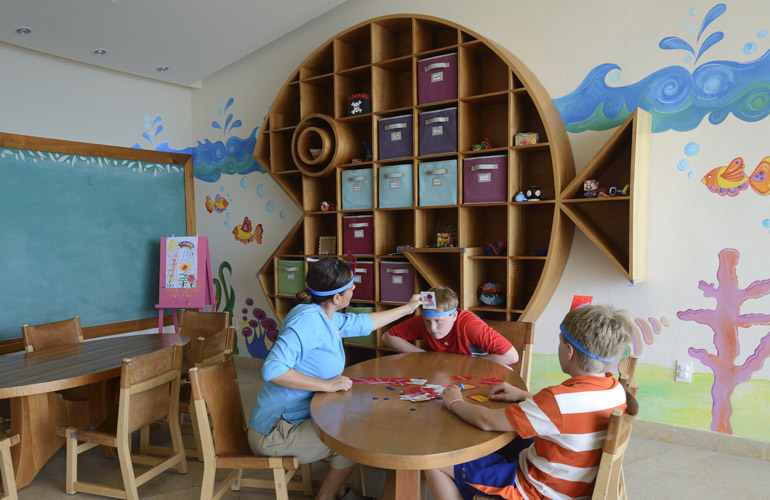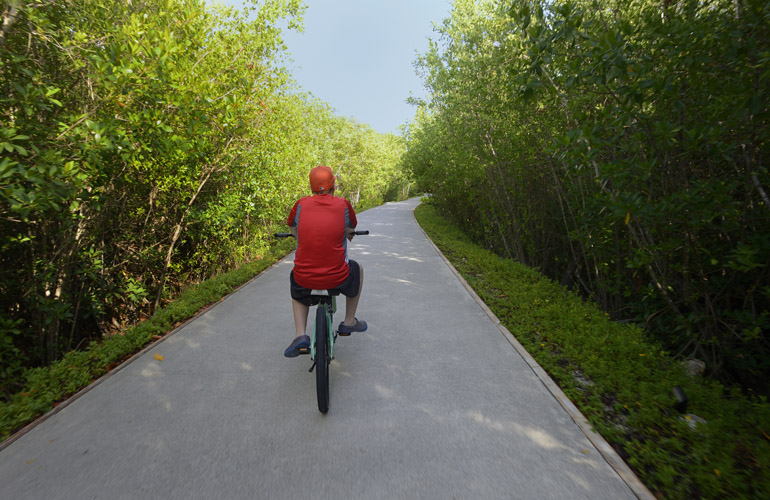In the new media landscape we live in, the unvarnished truth is harder and harder to come by. But business travel expert Joe Brancatelli always nails it.
I’ve interviewed Joe for dozens of articles over the years. Not only does he cut through the fog and BS that envelop so much travel coverage, but his advice is ageless. To this day, whenever I’m at an airport and want to find out how long my flight will really be delayed, I do what Joe taught me 13 years ago: Ask the gate agent, “Where’s the equipment?” Why? Because if you ask “When are we boarding?” they’ll say they don’t know or give the standard non-response “Just a few more minutes.” But if you ask “Where’s the equipment?” it forces the agent to check the computer and find out what time the aircraft left its point of origin—which tells you how much time you really have. (Nowadays you could also use the FlightAware app to find out where your plane is. But using the jargon with the gate agent is more fun.)
If you don’t know Joe’s site, JoeSentMe, then you’re not taking advantage of one of the best travel resources in existence. His “home page for business travelers” is not just for frequent fliers; the links listed there are for any traveler who wants to make smart, well-informed choices on the road. His newsletters are so wise, so true, so depressing, so snarky…I never know whether to laugh or cry. I usually do both. They’re worth getting, if only so you’ll know how to cope the next time a winter storm or airline strike threatens to wreak havoc on your travel plans.
And then there are Joe’s Steals and Deals. He ferrets out the best business-class airfare and hotel values, filtering out all those phony deals and doing the math so that you don’t have to. Best of all is when he lets you know the moment the airlines’ unadvertised Thanksgiving and Christmas business-class airfare sales to Europe start.
But wait. Stop. Before you check out Joe’s site, check out the travel tips and truths he shares in our exclusive interview. You’ll probably laugh and cry—and collect some cool new travel strategies for your arsenal.
Job and Title:
Editor and publisher, JoeSentMe.com, a non-commercial site for business travelers. Also, business-travel columnist for the 47 Business Journals around the U.S.
Most memorable travel moment:
I’ve been on the scene when governments and ideologies have fallen. I once was one of just five people in the Sistine Chapel. Lots of stuff like that, of course. Virtually everything I know about the world comes from having had the ability to travel it on business. I had never been more than 250 miles from where I was born until I took my first business trip. But I guess I have to give the incredibly obvious answer: I met my wife in a restaurant in a shopping mall on a business trip to Honolulu. So, you know, nothing is more memorable than that. (By the way, the Thai food was also excellent at the restaurant.)
Most embarrassing travel moment:
Too many to count, but I’ll give you one from just last month. I was in Hamburg on a Sunday evening and hadn’t had dinner. Not much is open in Germany on Sundays, so I went to the Hamburg Hauptbahnhof–the busiest train station in Germany–and found an interesting little take-out noodle shop that seemed popular. I order my meal in German and the Chinese woman behind the counter wasn’t sure what I wanted. So I switched to English. Not much more success. She then looks at me and says: “Your German is bad. And your English is poor too.” I mean, that is cold… I didn’t agree with her, of course. My German is serviceable enough and my English, when I keep my Brooklyn accent in check, is quite good. But she surely gave me an emotional beat-down with my noodles. I can’t ever recall being more embarrassed than that on the road.
Name one thing people would be surprised to find in your travel bag:
Duct tape. It’s an all-purpose problem solver. It’ll hold together a broken laptop, help you do an instant hem, repair a rip in your luggage or a hole in your shoes. It’ll be an emergency bandage if you need one, and I can’t tell you how many packages I’ve shipped home from around the world that were secured with duct tape.
Touristy spot that’s actually worth it, and the trick to doing it right:
Oahu, I think. First-time visitors never leave Waikiki. Regular visitors to Hawaii insist Oahu is too touristy and go elsewhere. But if you head into downtown Honolulu, you’ll find an interesting little city with some marvelous turn-of-the-century Hawaiian architecture. If you head off to the North Shore, you’ll find scenery to rival anything on any of Hawaii’s other islands. If you surf, the waves are best off the beaches of Oahu, too. And if you insist on hanging around Waikiki, just walk a couple of paces to Diamondhead for a wonderful hike to the top of the crater. Each of the Hawaiian Islands has their unique charms and culture. But I think Oahu offers it all in one place.
Non-touristy spot people should add to their must-visit list:
I’m urban guy. I love cities. I tell people to go to Pittsburgh and their heads explode. But it’s a charming town that has found a life after its iconic industry (steel) long ago disappeared. The confluence of the three rivers is a natural marvel. The Duquesne Incline is one of the world’s great funiculars. Food’s good, people are sophisticated AND nice. The museums and attractions (they all seem to be named Heinz, Carnegie or Frick) are top-notch. It’s a quintessentially American city and deserves a better reputation and more visitors.
Name 2 indispensable apps you use when you travel:
Salk’s Airport Transit Guide is the first thing I consult when I visit a destination for the first time. It lists every possible way to get from the airport to the city center so you can make an informed choice. When it was a print product, I carried it in my bag. Now that it’s an app, it’s literally the first one I add to any new phone. And the PriorityPass app. I spend more time than I’d like in airports, and I never want to be without access to a private lounge. So I make sure I know where all the lounges are and whether I have access to each via one of my credit card programs or Priority Pass membership or simply have to lay out cash.
The travel gadget or gear that has saved your life…or your mind:
My Glaser Designs Stadium bag. I bought it 25 years ago and the leather-and-ballistic nylon duffel is not only indestructible, it looks as new as the day I purchased it. I use it for short trips, of course, but if I plan and pack properly, I can squeeze a week’s worth of travel into it and still hit the carry-on rules of the airlines. A Glaser Designs transaction bag is my primary carry-on. It is beautifully crafted and has been my trusted travel companion since before 9/11. (I’m probably the last traveler in the world who doesn’t own a bag on wheels.)
Choose any two travel-world bloggers and tell us the most important thing you’ve learned from each.
I was the original frequent-flyer program expert 30 years ago because I was literally the first person to cover them regularly. All of the travel writers of the day—whether they were leisure or business-travel oriented—were obsessed with planes and hotels and destinations. But I came to travel as a business reporter, and I saw instantly how frequency marketing was changing the travel equation. But as the programs became more intricately entwined with the airlines and hotels that sponsor them, I switched to covering them as part of the package, not as their own products. So when I read Gary Leff’s View from the Wing today, I know the kind of deep thinking and sharp analysis he puts into the frequency game. His strategies and tactics are almost always sound, and he has a wonderfully holistic approach to maximizing the value you can get with your miles and points. And that is saying something because the airlines and hotels have literally rigged the games for their own benefit.
I love reading Carol Pucci’s blog. Carol is a marvelous reporter with a reporter’s eye for detail and telling a good story. She’s a fun read; she goes to places I’ll probably never get to because I cover business travel, not leisure travel; and I learn from her coverage of those destinations. Even when she visits places where I have been, I find she turns up details that I missed.
Whose Tweets do you find the most useful and entertaining when you see them in your feed?
I only got onto Twitter as a service to JoeSentMe members so that I could push out breaking news to them before and after our weekly newsletter and time-sensitive alerts. But it turns out I learn as much from my members’ Tweets to me because they are working literally everywhere in the world and transiting at airports everywhere. They are quick to alert me to something new or untoward they’ve found on a flight, in an airport, at a hotel, or in a place where they are working.
Name one way the travel industry can do better.
There are a million ways for the travel industry to do things better. But most of the existing companies in the travel industry don’t really want to innovate. Especially now, with energy cheap and profits high. So if you ask what one thing can be done better, I’d have to default to the U.S. Department of Transportation (DOT).
The airlines have made their pricing specifically opaque and infuriatingly convoluted. And they do it to trick leisure flyers into paying more. (Airline pricing starts by being biased against business travelers because we are perceived as “must fly” customers and we are ALWAYS charged more.) But the DOT should regulate more and better disclosure of mandatory or de facto mandatory fees. I believe the DOT should require airlines to show more than just the “fare” because the fare today only covers the actual transit. Whenever airlines put a price on their website or in an advertisement, it should also be accompanied by the cost of checking a bag, choosing a seat, making an itinerary change, and (if applicable) carrying on a bag.
We even have a template for this. The food industry once claimed it could never rationally have a label that explained a product’s contents and ingredients. Well, they have them now and we know how many calories, how much fat or sodium or whatever, is in the package. The airlines should be required to post a grid along with every fare that includes the other basics. It’s not hard, it’s not complicated, and it would allow leisure travelers to make informed choices about the true cost of flying with a particular airline.
Look into the future and describe one aspect of travel that you think will be different in 20 years:
Failing a breakthrough on Star Trek-style transporters, I don’t think airlines will be all that much different in 20 years. Lodging, on the other hand, will be dramatically different. And I base that simply on how much the lodging experience has changed in the last decade.
As personal tech gets even better and cheaper, I can’t imagine traditional hotels and resorts putting TVs or phones in rooms for much longer. You’ll bring your own stuff and just plug into the Net for all your communications and entertainment. Lobbies will continue to evolve because guests won’t need the check-in/check-out/concierge facilities because that, too, will be handled electronically. And while hotels aren’t yet suffering from the growth of Airbnb and other “sharing economy” operations, I think it’s inevitable that chains will try to ape what travelers like best from these options. You might see mixed-use buildings where some people are permanent residents and others are transient guests. The lodgings themselves might feel more residential and more personalized. That’s what’s good about the lodging industry. It has always been more willing to change and segment itself to accommodate guests. Airlines, of course, require you to adjust to them.
Most effective thing you’ve ever said or done to get an upgrade or a special perk while traveling:
I know this will sound incredibly basic, but the most effective thing anyone can do to get an upgrade or a perk is simply to ask politely. Don’t act entitled or arrogant. Just politely inquire if there is a better seat or better room or better car available. You’d be surprised how often something better is available simply for the asking. And even if they are not willing to give you something for nothing, a polite inquiry will yield some incredible bargains on a suite upgrade or a better class of car.
To make friends, I always carry:
Mints. Has anyone ever declined a mint?
Overrated:
Venice
Underrated:
Verona
If you were in my car during a road trip, you’d hear me singing:
“You Don’t Have to Cry” by Crosby, Stills and Nash.
The airplane movie that, unexpectedly, made me bawl was:
American Beauty. I was so shaken up I had to get out of my seat and go hang in the galley with the flights attendants so that I remembered life is better than that.
When I travel, I’m not afraid of:
Any new circumstance.
But I am afraid of:
Not having done my homework and being unprepared for situations that I would logically expect to encounter.
Follow Joe on Twitter @joesentme.



